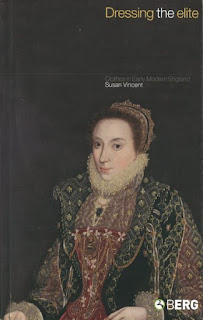This is a study of dress in the context of a society that is very alien to us. Early Modern England was extremely hierarchical and status conscious, with rank and wealth being seen as a divinely ordered reflection of the "Great Chain of Being". As a consequence, clothing was rigidly segmented on the basis of class, age and sex, with the differences being enforced by law if necessary.
Of course all these things intersected in interesting (and to modern eyes unexpected) ways. For example infants and small children had their own special clothing (seen as appropriate for their age) but tiny boys and girls were dressed identically to each other until around the age of seven. Gender roles were things to be grown into—unlike today where even newborns are dressed in colour-coded onesies.
Where adults were concerned the clothes of each sex were supposed to be quite distinct, with swords and breeches reserved for men, and skirts and corsets for women. This didn't prevent people from crossing the boundaries, however. Moralists were particularly incensed by women borrowing items (such as hats and doublets) from the male wardrobe. Much rarer was full-on cross-dressing, which was usually done for specific purposes. People caught wearing the clothes of the opposite sex could expect to be punished, but—need I add?—the punishments were usually harsher for lower-class women than upper-class men.
The hierarchies of class were were laid down by England's sumptuary laws, designed to prevent people from wearing the clothes of their "betters". Rank was the concern here, not wealth. Unsurprisingly the laws were not a success and the lawmakers struggled to keep up with both fashion and society in each succeeding piece of legislation. From the modern point of view the interesting thing is that fashion was considered to be a largely male interest, so women hardly figured in the sumptuary laws until fairly late in the struggle.
Vincent, Susan
Dressing the elite: clothes in early modern England
185973751X
Oxford: Berg, 2003










